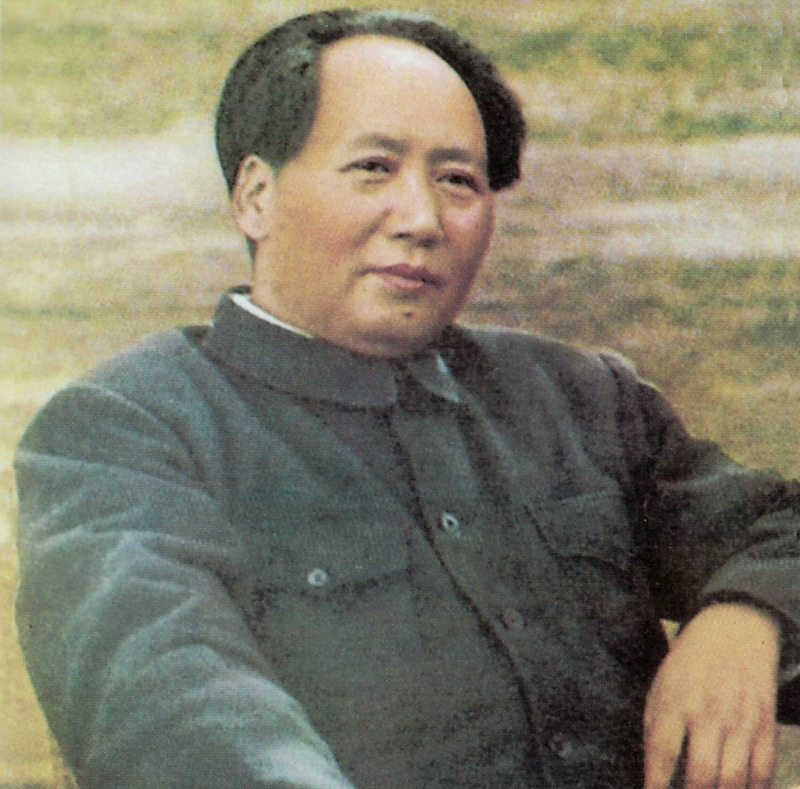Unlocking The Secrets Of The Mao Zedong Haircut | History & Style
Is a hairstyle merely a matter of personal preference, or can it tell a story? The Mao Zedong haircut, with its stark simplicity, transcends mere aesthetics, becoming a potent symbol of a revolutionary era and the man who shaped it.
The style itself is deceptively straightforward: a close crop on the sides and back, with a slightly longer top, often styled neatly. Yet, this seemingly unassuming haircut has resonated far beyond the borders of China, influencing fashion trends, political movements, and even pop culture references. Its a testament to the power of a single image to encapsulate a complex narrative.
The choice of this particular hairstyle by Mao Zedong, the founding father of the People's Republic of China, was no accident. It was a deliberate act, a carefully crafted message. It spoke of a leader who valued simplicity, humility, and a connection to the common people. This haircut wasnt about vanity; it was about projecting an image of accessibility and revolutionary fervor.
- Andy Mulvihills Net Worth From Action Park To Millions Unveiled
- Discover The Story Of Abraham Quiros Villalba Innovator Leader
Consider, for a moment, the contrast it presented. In a world often defined by elaborate hairstyles and ostentatious displays of wealth, Mao's haircut was a deliberate rejection of such notions. It was a visual representation of his commitment to egalitarian ideals, a rejection of the class distinctions that had plagued China for centuries. It was a statement of solidarity with the masses.
The haircut's impact extended far beyond China's borders. It became a recognizable symbol of the communist revolution, instantly identifying Mao Zedong and his political agenda. In a world often characterized by visual cues, the Mao Zedong haircut was a potent identifier. The haircut wasnt just a style; it was a statement, a symbol, a uniform of the revolution.
The influence of the Mao Zedong haircut can be seen in various contexts. It became a recurring motif in propaganda posters, films, and artwork, solidifying its status as an iconic image. It permeated popular culture, influencing fashion trends and inspiring artists and designers. Even today, the haircut remains a recognizable symbol, evoking associations with China, communism, and revolutionary ideals.
- Jodean Bottom The Untold Story Of Joaquin Phoenixs Sister Discover Now
- Ron Cheryl Howards Love Story A Hollywood Romance
Beyond its political significance, the Mao Zedong haircut also offers insight into the cultural values of the time. The emphasis on simplicity and practicality reflects a broader societal focus on collective good over individual expression. The haircut embodied a commitment to egalitarianism and a rejection of the excesses of the past.
However, the haircut's connection to politics has also led to controversy. In a society where every aspect of life was scrutinized, even a haircut could be subject to criticism. The style became a symbol of rigid control and conformity, a reminder of the restrictions on personal freedoms imposed during the Cultural Revolution.
While the Mao Zedong haircut might not be as ubiquitous today as it was in the mid-20th century, its legacy persists. It remains a potent symbol, a reminder of a transformative period in Chinese history. It can be found in art, fashion, and popular culture. It serves as a reminder of the powerful role that appearances can play in shaping identity and conveying meaning.
Consider the context of the Cultural Revolution, a period marked by intense social and political upheaval. During this time, hairstyles like the Mao Zedong haircut became more than just a fashion choice; they became a form of identification, signaling allegiance to the revolutionary cause. The haircut, along with the uniform, symbolized a commitment to the ideals of communism and equality.
The story of the Mao Zedong haircut is not simply a story of a hairstyle. It's a story of a leader, a nation, and an era. It's a reminder that even the most seemingly mundane aspects of life can carry profound meaning. The haircut continues to intrigue people globally, inspiring hairstylists and history enthusiasts alike.
It is important to note that the haircut also had implications for personal expression. While the haircut could reflect solidarity, it also reinforced a degree of uniformity and conformity. The Mao Zedong haircut was a symbol of a complex and multifaceted era, one marked by both progress and repression.
The legacy of the Mao Zedong haircut continues to resonate. It symbolizes the political and social changes that swept through China. It is a reminder of the influence of visual cues and their ability to shape perceptions.
| Attribute | Details |
|---|---|
| Name | Mao Zedong () |
| Born | December 26, 1893, Shaoshan, Hunan, China |
| Died | September 9, 1976, Beijing, China |
| Nationality | Chinese |
| Known For | Founding father of the People's Republic of China; Chairman of the Communist Party of China |
| Political Ideology | Marxism-Leninism, Maoism |
| Key Policies/Actions | The Great Leap Forward, the Cultural Revolution, the establishment of the People's Republic of China |
| Significant Writings | Quotations from Chairman Mao Tse-tung (The Little Red Book), numerous essays and speeches |
| Influence | One of the most influential figures in the 20th century; his ideas had a profound impact on China and influenced communist movements worldwide |
| Legacy | Complex and debated; seen as both a revolutionary leader who brought about significant social change and as responsible for policies that led to widespread suffering |
| Hairstyle | The iconic Mao Zedong haircut: short on the sides and back, with a slightly longer top. |
| Reference Website | Britannica - Mao Zedong |
The haircut itself became a symbol of the era, a visual representation of the changes that were taking place. It was a deliberate choice, a statement of the values and beliefs of the man who wore it. As a result, the Mao Zedong haircut transcended mere style, becoming a significant cultural marker.
In fashion and pop culture, the Mao Zedong haircut has been reinterpreted and reinvented in numerous ways. It appears in everything from artwork to satire, and its appearance remains a familiar cue in modern discourse. The style continues to be a symbol of cultural significance, inspiring discussions about its history and its lasting effect on people around the world.
The haircut has also been adopted by various groups throughout history, often as a visual identifier of solidarity or affiliation. From the scuttlers of Manchester and the peaky blinders of Birmingham to modern-day subcultures, this haircut has offered a means of both conformity and expression.
The influence of the Mao Zedong haircut also extends into the realm of satire and humor. References to the haircut can be found in memes, social media posts, and comedy routines. These jokes are a testament to its continued cultural significance, showing that the haircut is still a subject of discussion and reference.
The evolution of the haircut is a fascinating case study in how cultural trends can both shape and reflect social attitudes. As society changes, so too does the interpretation and significance of the Mao Zedong haircut. Its a reminder of the ever-shifting nature of fashion and symbolism.
The study of the Mao Zedong haircut offers a captivating insight into the man behind the style and the era he helped shape. Its a testament to the power of visual communication and its lasting impact on history. The haircut remains a symbol of an important time in history and it is a classic that continues to inspire artists, historians, and those interested in fashion.
The haircut is a symbol of a complex era, offering insights into the cultural values of the time, and the political changes that swept through China. The simplicity and practicality of the haircut reflected a broader societal focus on collective good over individual expression, and its influence continues to resonate in fashion, politics, and pop culture.
The story of the Mao Zedong haircut is not just the story of a hairstyle. It is the story of a man, a nation, and an era marked by profound social change. The haircut is a lasting symbol of a transformative time in history, which continues to inspire discussions. The Mao Zedong haircut provides a window into an important chapter of history.



Detail Author:
- Name : Janie Nienow
- Username : alysson.morissette
- Email : shahn@hotmail.com
- Birthdate : 1980-07-16
- Address : 711 Wilderman Canyon Gaylordfort, NM 02279
- Phone : 585-810-2995
- Company : Gleason, Carter and Feest
- Job : Foundry Mold and Coremaker
- Bio : Alias deserunt sint consequatur mollitia sed provident consectetur iste. Aut in non numquam cumque et possimus impedit. Ut voluptatem nemo et ab dolorum et.
Socials
facebook:
- url : https://facebook.com/jalyn6126
- username : jalyn6126
- bio : Omnis provident voluptatem saepe consequuntur beatae sed harum.
- followers : 876
- following : 2113
tiktok:
- url : https://tiktok.com/@jalyn8579
- username : jalyn8579
- bio : At amet similique doloremque optio quo. Ut aliquam et numquam numquam modi.
- followers : 3963
- following : 349